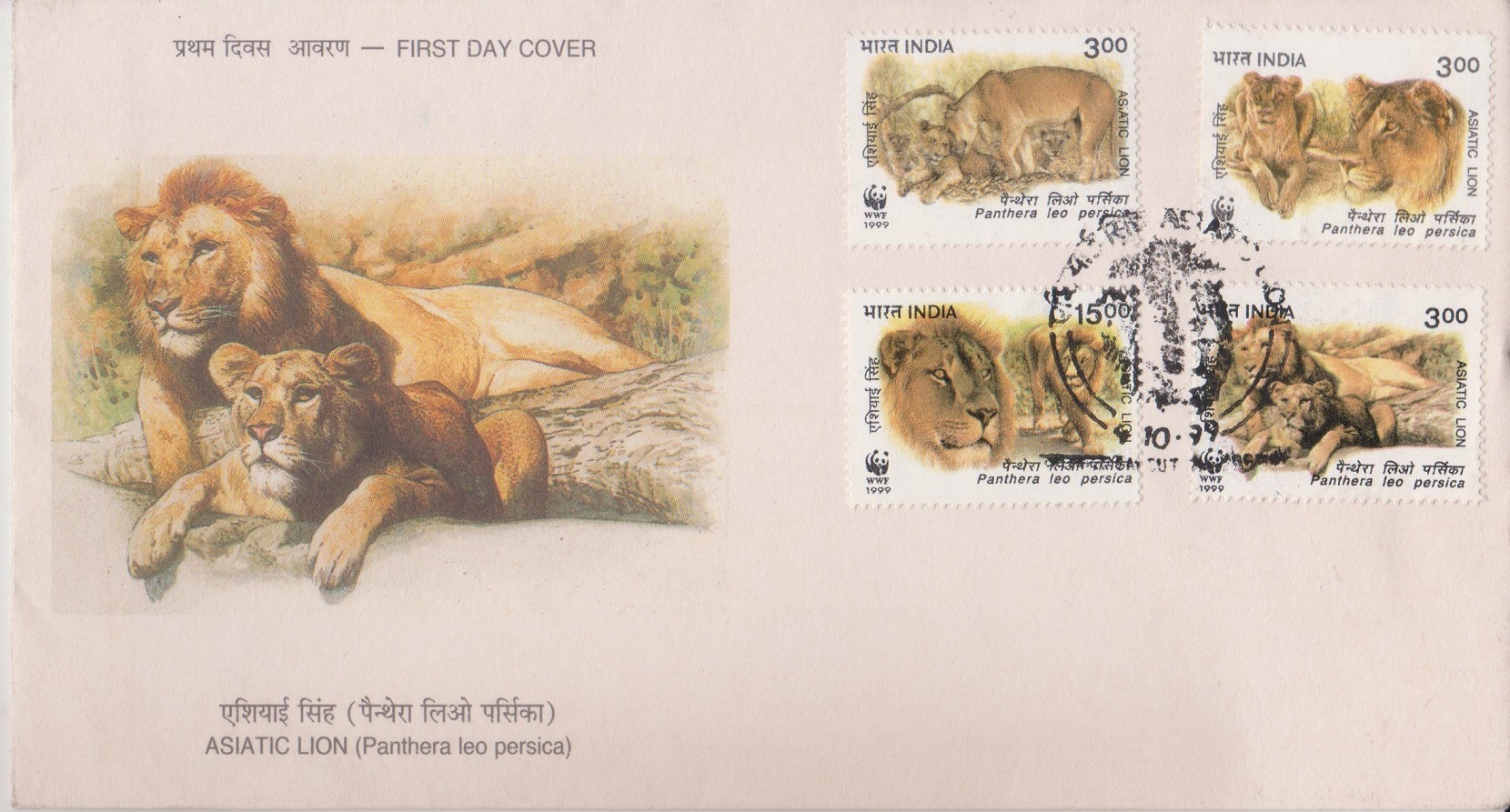
Asiatic Lion (Panthera leo persica)
Complete Set of 4 nos of commemorative postage stamps on the Asiatic Lions, a Panthera leo leo population in India (Gir National Park & Gujarat) :
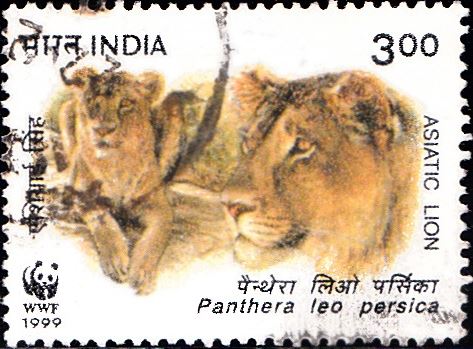
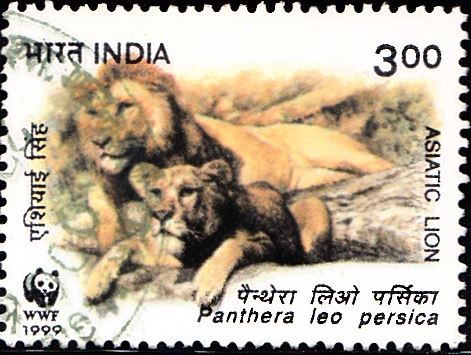
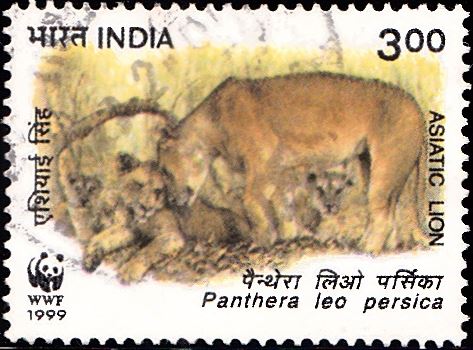
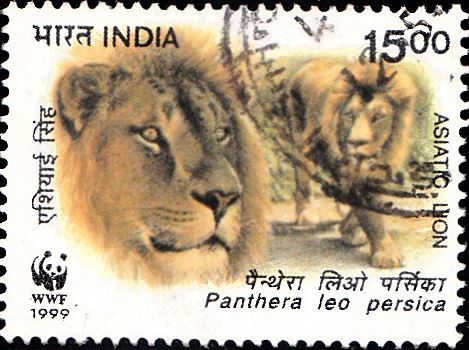
 Issued by India
Issued by India
Issued on Oct 4, 1999
Issued for : The set of stamps, forms part of the World Wide Fund for Nature Conservation Stamp Collection. Through the issue, the Department of Posts, draws attention to India’s long tradition and abiding faith in conservation of nature, and the need to have conservation education at formal and non-formal levels, through teaching institutions, media, voluntary agencies and movements for public awareness.
Credits :
Stamp & FDC : Owen Bell, through WWF
Cancellation : Alka Sharma
Type : Stamps, Postal Used
Colour : Multi Colour
Denomination : 300, 300, 300 & 1500 Paise
Overall size : 3.91 x 2.90 cms.
Printing size : 3.55 x 2.54 cms.
Perforation : 13 x 13
Paper : Imported unwatermarked Adhesive Gravure Coated Stamp Paper in Sheets 50.8 x 53.5 cms.
Stamps Printed : One Million Each
Number per issue sheet : 36
Printing Process : Photogravure
Printer : India Security Press, Nashik
About :
- There is a growing consciousness, the world over, of the need to instill conservation awareness – an understanding of the importance of biological diversity of inter-relationships in nature, of the sustenance and stability of ecosystems and of man’s impact on the natural world. The growth of industrialisation, and progressive exploitation of nature have had an adverse impact on wildlife. Hunting animals, alteration of the environment, habitat destruction and other factors have led to the extinction of a large number of species of fauna. Since Independence, India has accorded high priority to conservation of endangered species. Through the issue of this set of stamps on the ‘Asiatic Lion’, the Department of Posts focuses attention on the need to protect wildlife, in particular, the much diminished population of Asiatic Lions.
- The lion is a part and parcel of Indian culture – it is reflected in art, literature, and folklore of this country. Even the ancient Indus Valley Civilisation paid due attention to this majestic species as it was portrayed on their seals. Four lions adorn the Indian Government’s official emblem, which is popularly called the “Lion Seal”.
- The Asiatic Lion once upon a time had wide distribution covering Mesopotamia, Arabia, Persia and major parts of northern and central India. However, over-hunting and disturbance in its habitat due to agriculture, the disappearance of the open grass and scrub forest lands led to its wide ranging extinction from all areas except the Gir Forest in Saurashtra in Gujarat, India. At the turn of this century there were very few lions left, when the erstwhile ruler of Junagadh State, imposed strict protection measures, including a ban on trophy hunting. Conservation of wildlife measures, after independence, steps taken by the Government for management, protection and improvement of habitat of the Gir Lion Sanctuary, have led the population of these lions to stabilise around 280. The species of the Asiatic Lion has been saved, and its habitat, in fact the entire eco-systems restored to health. The Gir Forest is the last refuge of the Asiatic Lion in the world, other than those protected in various zoos.
- Unlike the tiger which prefers dense forests with adequate cover, the lion inhabits in scrub-type deciduous forests. It is a nocturnal hunter with a strongly developed sense of hearing. Compared to its African counterpart, the Asiatic Lion has a scantier mane. The lioness does not have a mane. The Asiatic Lion like the African is largely a predator on large herbivores. It is a sociable creature and live in small groups called ‘prides’, to separate and drive the selected prey to other members of the ‘pride’ lying in ambush. During the day the lions lie up in cover near water holes or streams or in the shade of spreading banyan trees. They come out to hunt at dusk. The commonest prey item is the Chital Deer, which is by far the most abundant herbivore in the Gir Forest. Wild Boar, Neelgai, Sambar Deer, Four–horned Antelope, domestic cattle, pig also comprise minor portion of prey taken.
- Text : Based on materials furnished by WWF-India; Endangered Animals of India and their Conservation – S. M. Nair.


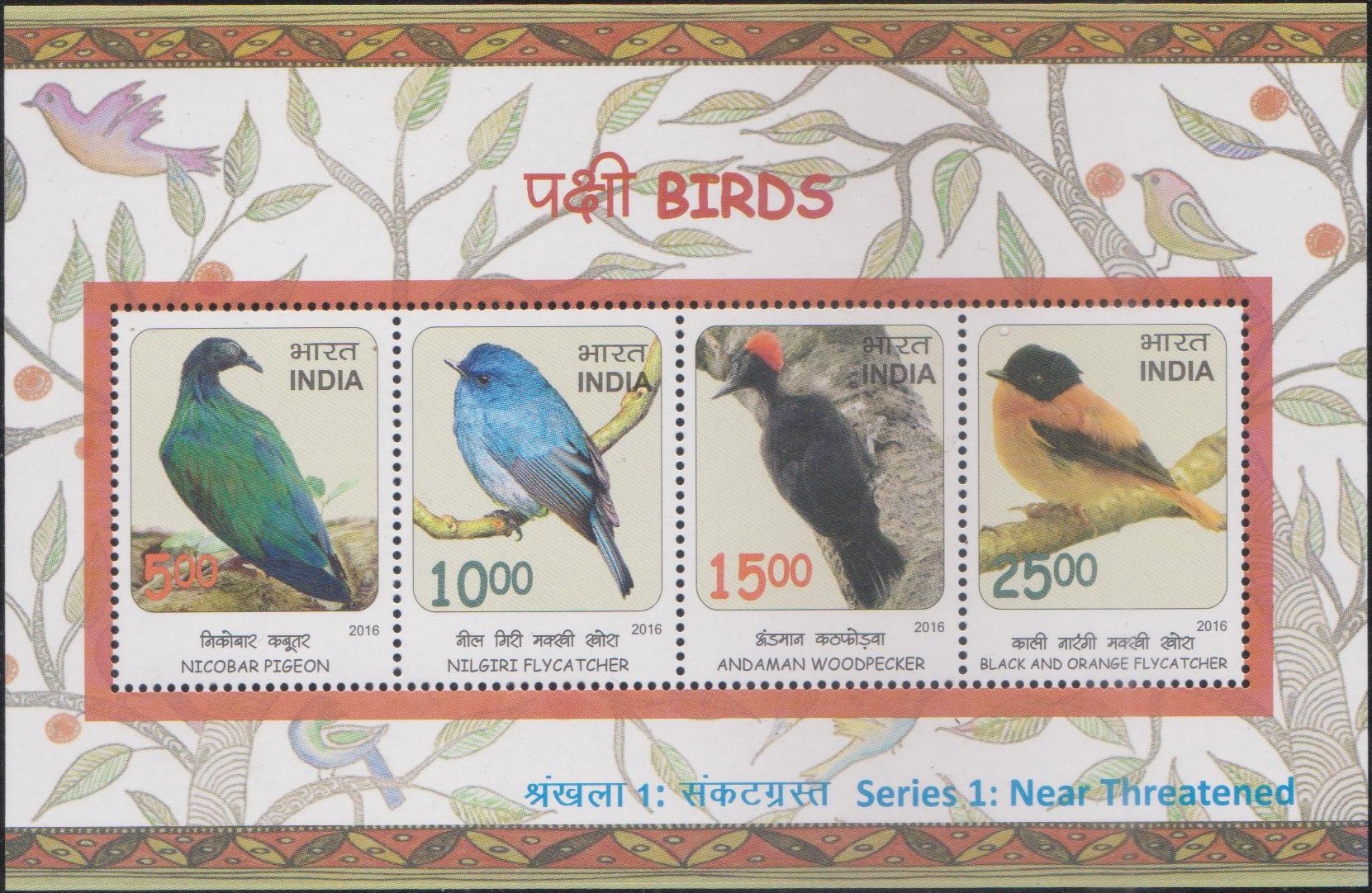

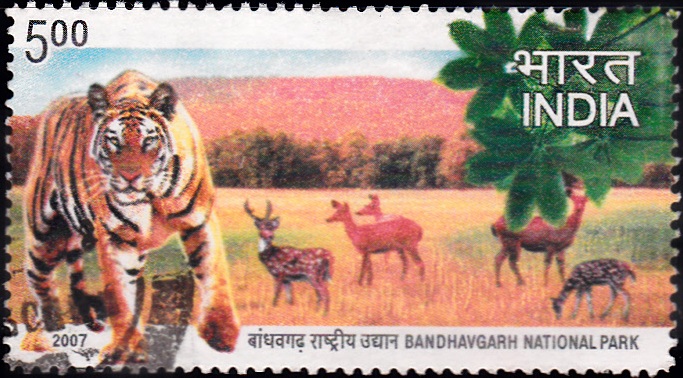

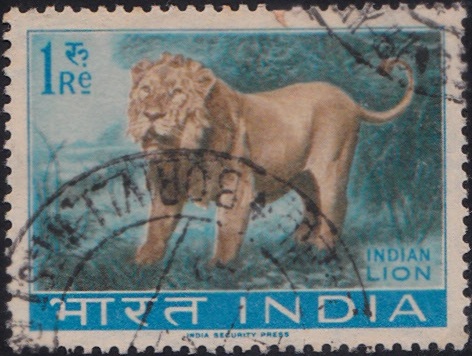
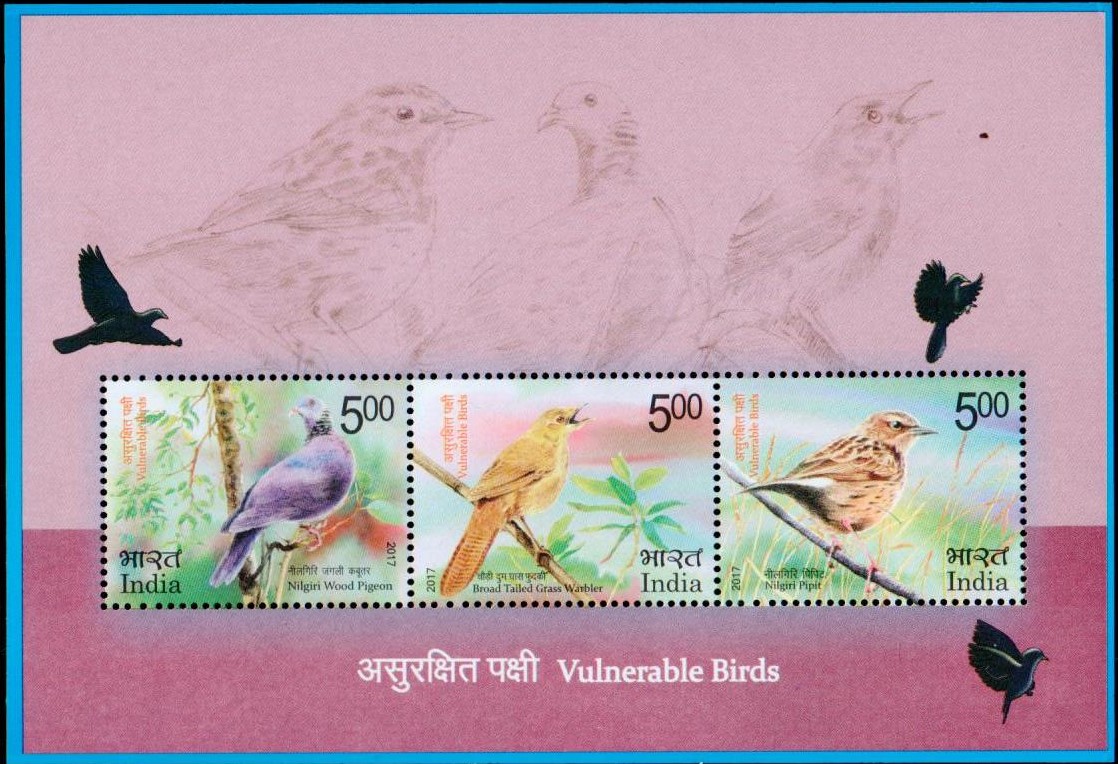
[…] it from other cat family animals. Its feet resemble those of the panther, tiger and the lion. The markings of the clouded leopard give it beauty and […]
[…] on 26th January 1950, the day India became a Republic. The actual Sarnath capital features four Asiatic lions standing back to back, symbolizing power, courage, confidence and pride mounted on a circular […]